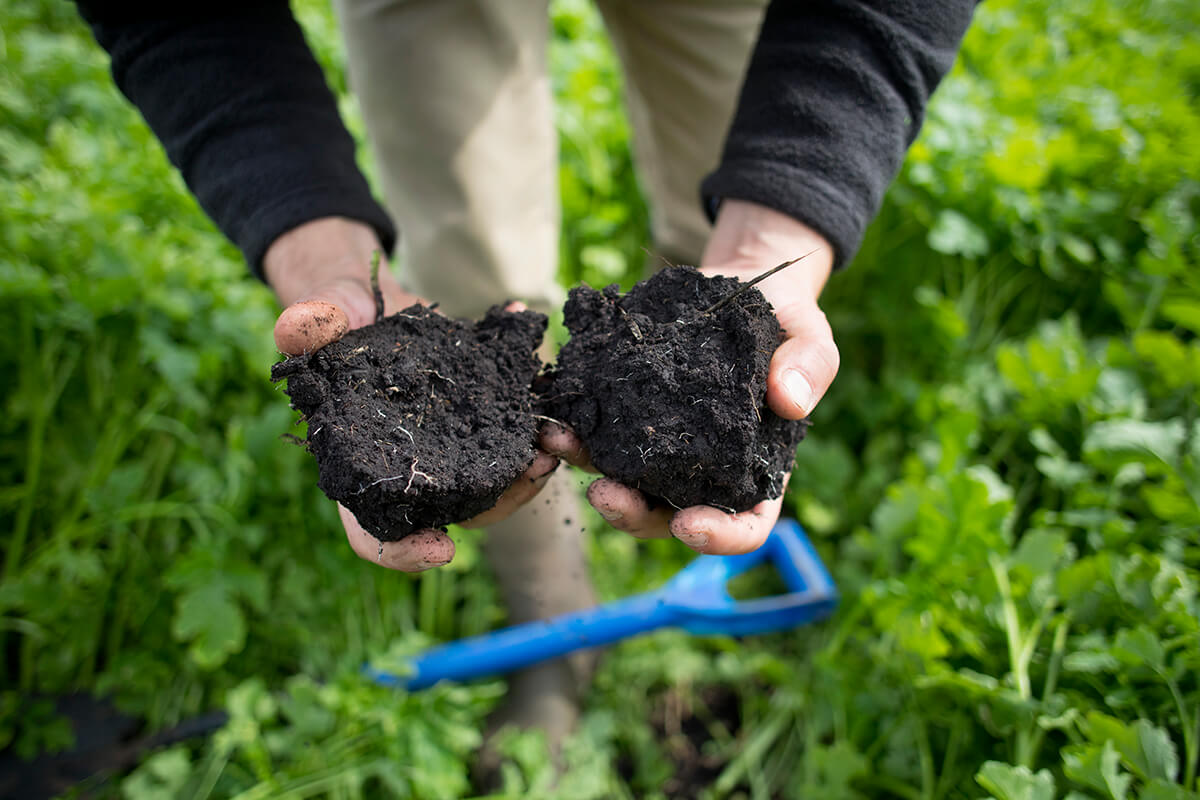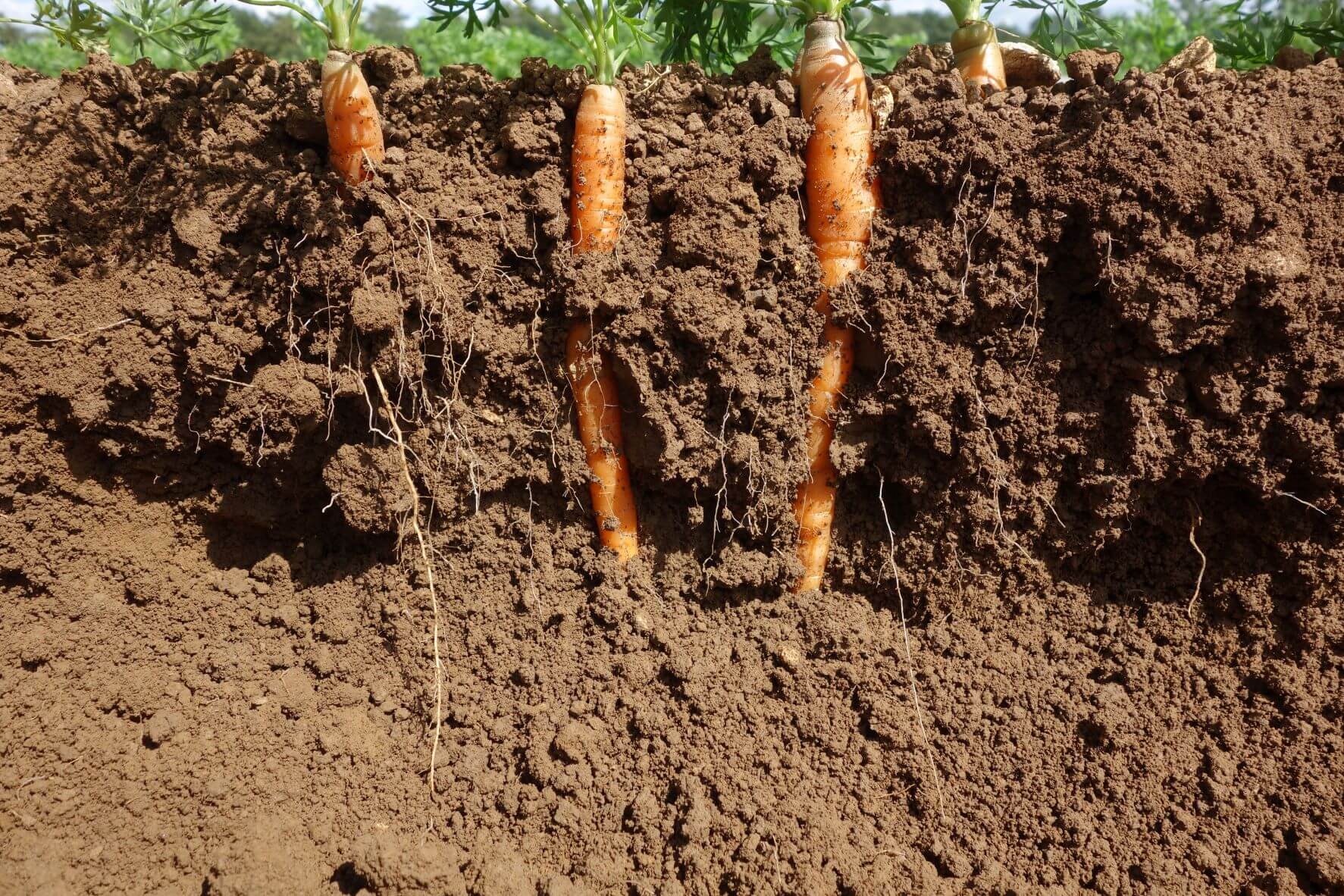- Soil Association
- Take action
- Grow at home
- Allotments and home-growing
- Starting a nature-friendly allotment

Starting a nature-friendly allotment
How to create a nature-friendly allotment
Find out:
Prepare your plot
Before you start growing, you'll need to:
- clear all weeds
- plan the area. Four beds is the classic layout for rotating your crops each year.
- measure your beds. They should be no more than 1.5m wide, so the middle of each bed can be reached without standing on the soil.
- plot your paths. Paths are best created with cardboard, woodchip or compressed soil. Standing on soil will compact it, reducing space for oxygen and making it harder for roots to get through. Use a plank of wood to spread the load if you need to step into your bed.
- make your bed. Raised beds are a better option if the soil quality is poor. Plus, it's easier on your back. The downside to raised beds is that timber isn't cheap, and it can be a haven for slugs.
- dig... or not dig. The no-dig approach is a great way to protect the structure of a soil. To do this, lay down a thick layer of mulch, such as cardboard* sheets. Then add lots of compost on top. If supressing or digging over weeds or grass, leave it a couple of months before planting into the bed. The plants will then have had time to decompose properly.
If digging, mark out your bed and dig out over a spade’s depth. Partially fill the trenches with compost, before backfilling.
*Note on cardboard: using cardboard is not generally advised in organic certified systems. This is because we can't be sure of the glue, adhesives and inks that have been used, or where the cardboard has come from. If you do use cardboard, remove tapes and staples and choose blank, brown sheets.
Cover your plot and wait for it to be ready to plant up.

Work out your soil type and improve your soil health
Knowing the soil type will help you choose what you should grow and what steps are needed to improve it.
Types of soil:
- Clay soil is heavy, difficult to dig, difficult to plant into and often has poor drainage. But, it keeps in nutrients and gives roots a good anchor.
- Sandy soil tends to dry out due to its coarse crumbly texture, so it struggles to keep in nutrients. But, seeds germinate well in sandy soil as it heats up more quickly.
- Loamy soil is a mixture of sand, silt and clay – probably the best soil type.
Check your soil pH to see if the soil isn’t too acidic or alkaline. You can make your own homemade test or buy a soil tester kit.
Improve the health of your soil by:
- increasing organic matter by adding compost and mulch. This will improve fertility, water retention, soil structure and biological activity.
- growing green mulches, or fast growing ground cover plants, on beds that you're not using.
- rotating your crops - read about crop rotation below to find out more.

Decide what to plant
Perennials. These have lifecycles that last for years. Decide where these go first as they will likely become a permanent feature in your allotment.
- Fruit. Plant these early. Apple, pear, plum, cherry trees, as well as rhubarb, berries and currants take 2-3 years to produce.
- Perennial herbs. Rosemary, mint (keep contained), sage, thyme can be used for cooking, and also produce bee-friendly flowers. Plant alongside annual herbs such as chive, dill, coriander and parsley.
Other herbs and flowers. Plant a wide variety of herbs and flowers for:
- keeping pests away from your crop
- proving natural predator food
- encouraging bees and other pollinators
Rotation crops (annuals). Rotational planting means planting in groups and rotating their position each year. This improves soil health and adds nutrients in the soil. Leave a three year gap before the same group returns to the same spot. Use four main beds for each of the crops groups:
- Potato family – including tomatoes, aubergines, peppers
- Legumes – peas, broad beans, French beans
- Brassicas – broccoli, cabbages, calabrese, radishes
- Onions and roots – onions, garlic, leeks, shallots, carrots, parsnips.
Non-rotational crops. A different approach is to combine different plant properties. One way is the three sisters method of mixed cropping. This groups corn, beans and squash together.
Top tips
- Save seeds and take cuttings
It's easy to save seeds from plants like tomatoes, beans, peppers and onions. Take cuttings from plants like blackcurrant, honeysuckle, or herbs like rosemary and lavender. Find out more in our guide to seed saving. - Keep pests at bay
Instead of trying to get rid of pests, think of how and when best to manage them. Plant chives, garlic and calendula and their smell will keep pests away. Plant nasturtiums to attract pests away from cabbages, tomatoes and beans. The sticky stems of calendula can also trap aphids and blackfly. - Introduce bug hotels
Bug hotels provide a home for all kinds of creatures, including the predators that will keep pests, like aphids, away. Buy one, or make one yourself. Find out ways to introduce more wildlife into your garden. - Cover bare soil
Protect your soil by planting in empty spaces. Bare soil will dry out more easily and then be blown away by the winds. Find out more about soil-saving plants. - Use a woodchip mulch
Woodchip mulch is great at locking in water, slowing down weeds, and it can act as a slow fertiliser. Find out how to use woodchip mulch. - Do companion planting
Companion planting is a way of choosing plants that benefit each other. This can help keep pests away and improve pollination. A good plant pairing is basil and tomato. The aromatic basil herb can help keep insects away from tomatoes when planted at the base of a tomato plant.
-
Join the community
Sign up to our newsletter today to receive more fun wildlife facts, practical tips on sustainable living, news, offers and information on other ways you can get involved. You can unsubscribe at any time.
Sign up to our e-newsletter
